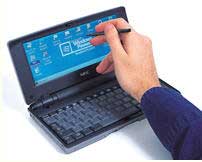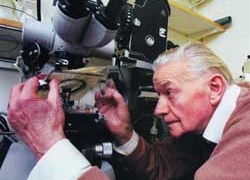When it comes to technical breakthroughs, this year’s personal computers (PCs) are hardly different from previous models. Previous advances such as wireless networking, lightweight laptops, and the widespread adoption of DVD/CD-RW drives seem unlikely to occur this year as companies compete primarily through price reduction.
Therefore, let’s take a look at what PCs will be like in 2007 compared to today. At that time, dual-core processors will become common. Microsoft is expected to launch the long-awaited Windows Vista, an upgrade for Windows XP. Software companies will begin rolling out a variety of 64-bit multithreaded products. Some emerging technologies today, such as mobile wireless PC cards and high-resolution video cards, will become standard in mainstream machines.
Vista’s Challenges to Popularity
 |
In 2007, users will have access to PCs with new features. |
The latest operating system from Microsoft, when officially launched, will not include many features that the company has promised over the past few years. However, Vista will offer improvements in security and graphics. Users will find it easier to search for documents on their machines. Despite the heavy marketing campaign Microsoft will launch, Roger Kay, President of Endpoint Technologies, advises consumers not to rush into purchasing new machines pre-installed with the Vista operating system. Gartner has also provided similar advice, suggesting that users will not transition to Vista until 2008.
While there will be pressure for computer manufacturers to sell machines pre-installed with Vista, Microsoft will face significant challenges in convincing enterprise users to switch operating systems, as most have already invested heavily and are familiar with Windows XP. One way Microsoft can accelerate this transition is by promoting software built on the 64-bit platform to deliver groundbreaking results that will persuade users.
Mobile Computing
In 2005, Verizon Wireless encouraged customers to use PC cards to connect to mobile networks designated for computers (EV-DO). This year, Dell, Hewlett-Packard, and Lenovo will introduce machines equipped with EV-DO or HSDPA (High-Speed Mobile Data) chips, similar to the introduction of integrated Wi-Fi chips in the Centrino line two years ago. As mobile network speeds improve, users will start storing information on company or organizational servers. Because they can access stored information at any time, they will tend to use such machines for data security.
Terabyte Hard Drives
Technology for right-angle storage in hard drives, which allows for greater data capacity, has begun to appear in some commercial hard drives after being limited to research drives for many years. In 2007, this type of hard drive will become mainstream, pushing desktop hard drive capacities to terabytes instead of gigabytes.
For other types of drives, the transition from DVD to Blu-ray or HD-DVD will be slow. These drives are only expected to emerge by the end of this year and will start to become relatively common in high-end machines in 2007.
Batteries with Longer Life, but Not by Much
Users can expect laptop batteries to last longer than they do now, but this will not represent a technical breakthrough. In fact, advances in battery manufacturing are making longer-lasting batteries more achievable, but the extra power is almost entirely consumed by processors and new functions.
Fuel cell batteries, capable of powering laptops for up to 12 hours, may begin to infiltrate the market in 2007, but they will not be widespread. Tech enthusiasts will likely be the first to purchase them, while the majority of users will wait for a stable charging infrastructure before adopting this type of battery.




















































